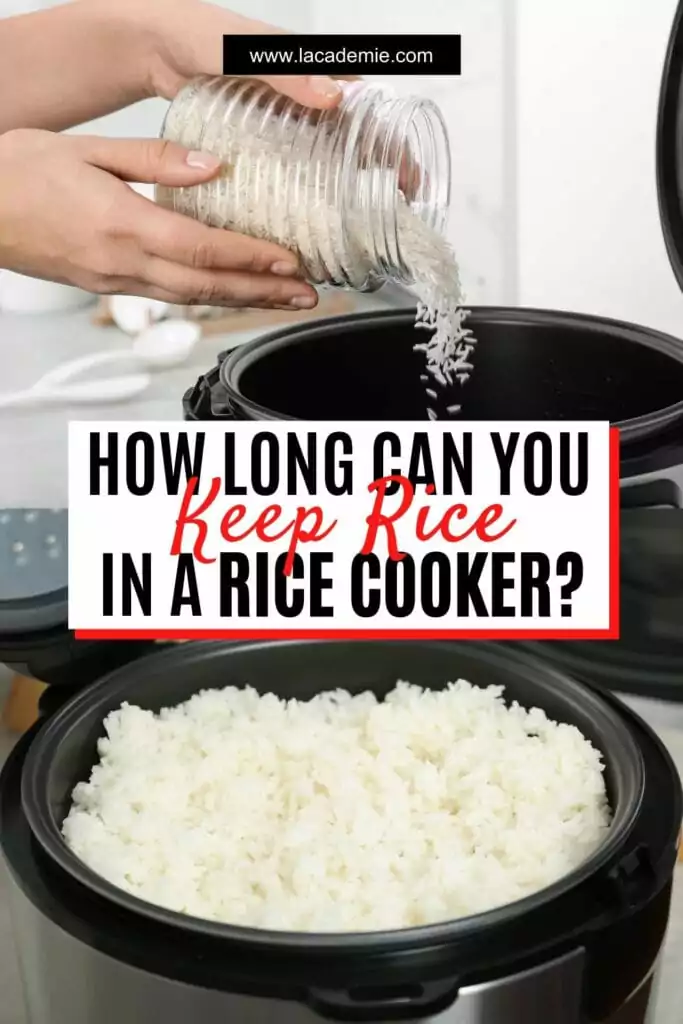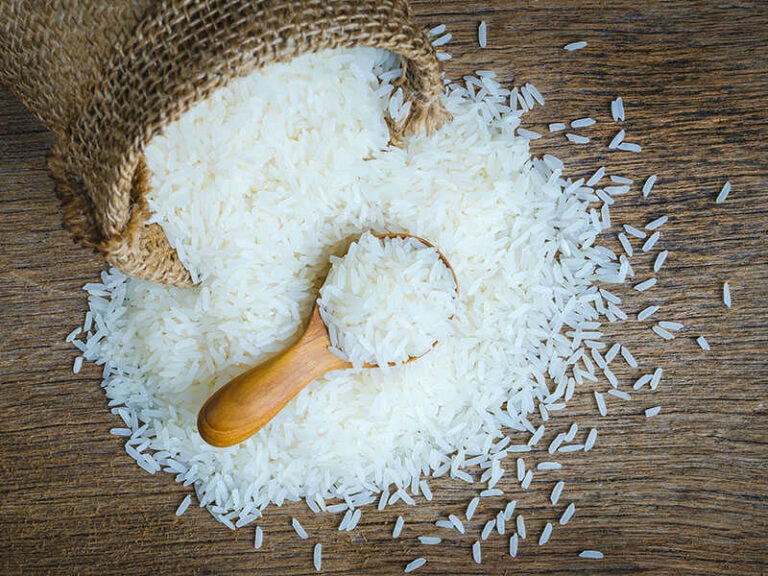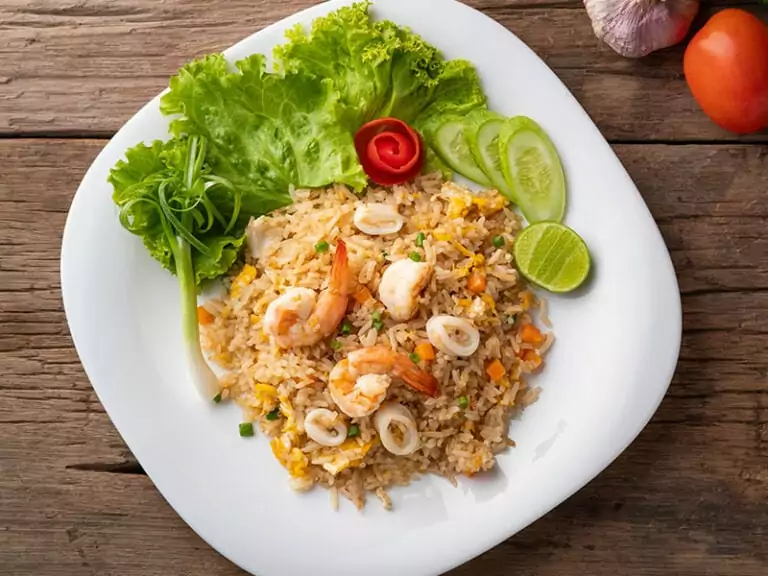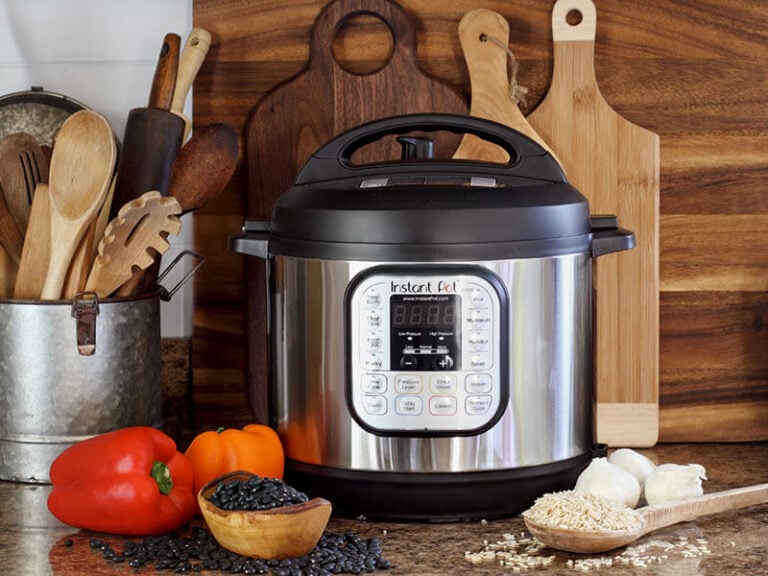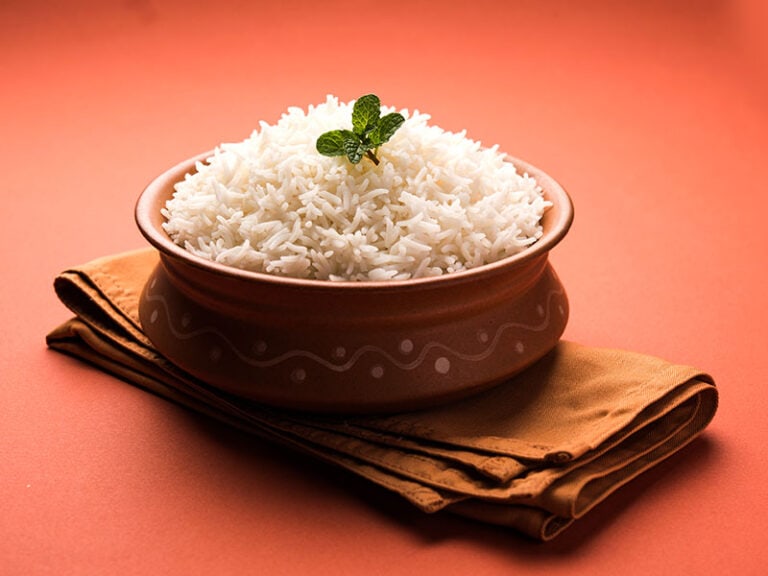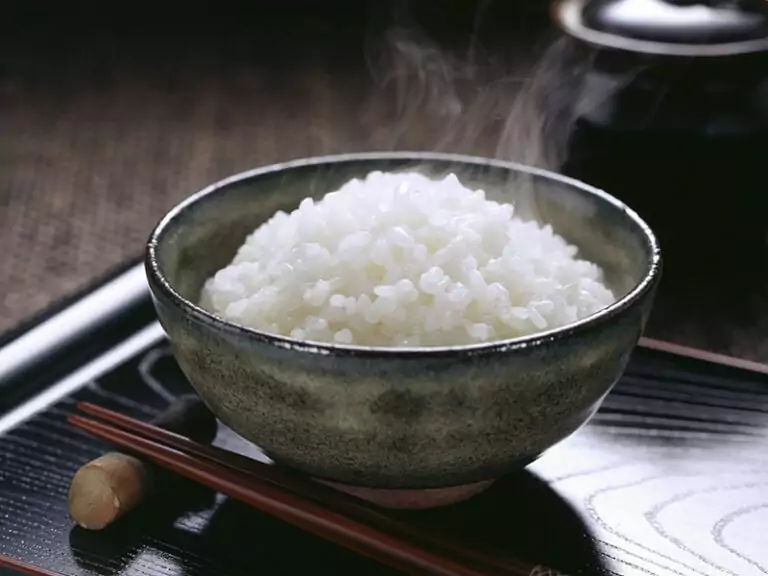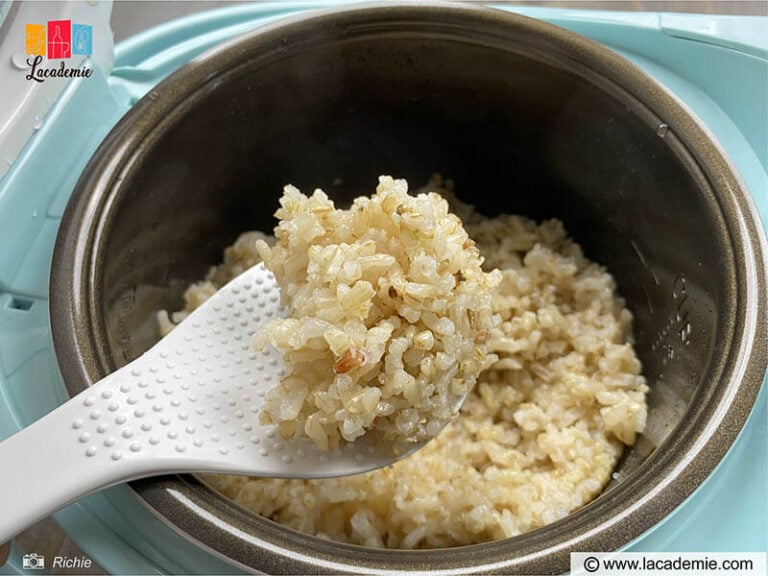Today I will discuss how long you can keep rice in a rice cooker, especially when you accidentally cook more than the necessary amount of rice for serving. If you have ever traditionally cooked rice using a pot, you know how time-consuming it can be.
Rice cookers are practical, easy to use and cook perfect, fluffy rice completely unattended. Moreover, rice cookers have a “keep warm” option, which many users find practical. It also prevents overcooking and helps you keep your rice ready for the next meal.
This can also come in handy for those with an overcrowded fridge or those trying to reduce the total pounds the fridges weigh due to safety reasons. So don’t be surprised if you see your friend insist on keeping the rice in the rice cooker instead of storing it in the fridge or freezer.
I will discuss more aspects of rice cooker performance, including the safe time frame for keeping the prepared rice in the cooker and possible concerns if you prolonged the time frame. You will find out what is the correct way to store cooked rice!
First of all, let’s analyze how rice cookers work.
How Does a Rice Cooker Work?
Not very long ago, people boiled rice until they tried it to see if it was done. Sometimes, even seasoned chefs make mistakes in determining whether the rice is ready. However, once you’ve mastered using a rice cooker to prepare rice, you’ll no longer have to worry about undercooked or overcooked rice.
It leads me to the question: how does the rice cooker always stop cooking rice at the right moment and deliver perfectly cooked rice?
It has something to do with the science and technology behind the device. High-rated stainless steel rice cookers are common on the market, and many people prefer them for their durability and quality.
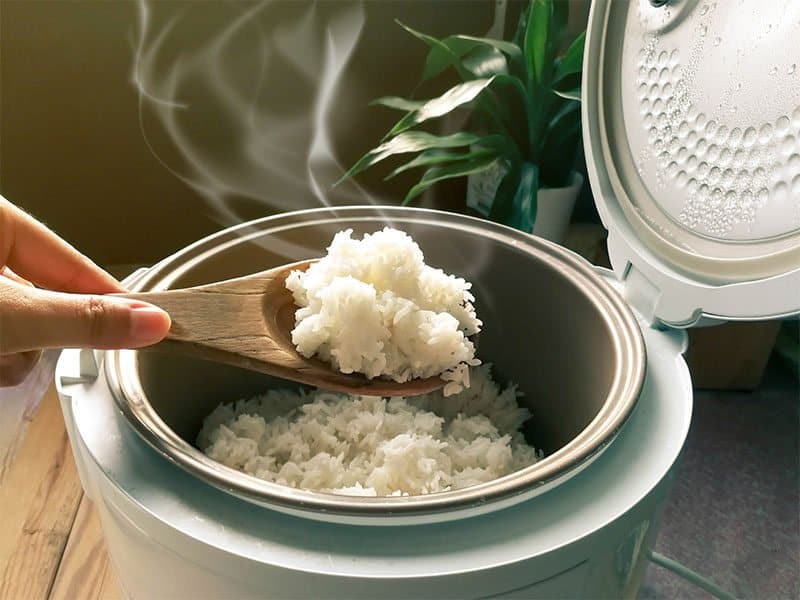
Once you turn the device on, the heating element produces heat, which is transferred to the cooking bowl.
Therefore, you need to keep in mind the appropriate water and rice ratio cooked in rice cookers. As the temperature rises, the water on the bottom reaches maximum temperature, which leads to steaming.
Then, rice absorbs the rest of the water, but the thermostat prevents the temperature from rising and burning it. Instead, the rice grains are cooked at an even temperature until there is no water left in the bowl. Once the water is fully absorbed, the rice cooker stops.
If you are unsure about checking whether rice is overcooked or not, a rice cooker is surely a good friend for you.
Watch this video to know more.
How Does Keep-Warm Function Work?
More and more rice cookers have the keep-warm function. It works by maintaining the same temperature inside the bowl – usually 140 or 150 degrees Fahrenheit. The temperature is good for keeping the rice ready for serving, prevents the rice grains from draining or burning, and discourages bacteria growth.
Some models offer extended keep-warm function, which can maintain warm rice up to 12 hours after cooking. But, is it safe to leave the rice that long?
Is Leaving Rice Cooker Unattended Risky?
Rice cookers are safe kitchen appliances, and if you follow the instruction, you can leave them unattended. Don’t put more water than you should for the type of rice you’re cooking. Often, rice cookers come with cooking instructions for each rice type. As long as you follow the instructions, you can leave the cooker to do its work.
The same applies to the keep-warm function. You don’t even have to be present in the room.
If the wiring or installations are faulty, a rice cooker might stop working sooner than it should, but the devices include safety features that will prevent the cooker, in most cases, from causing fire or damage.
Bacteria In Rice
Uncooked rice or partially cooked rice sometimes contains dormant bacteria spores. The bacteria can cause food poisoning with common symptoms of vomiting or diarrhea.
The bacteria live in soil and transfer to raw foods. Other than rice, potatoes, beans, and peas can be infected with these bacteria.
According to one research, around 37% of served rice in restaurants contains these bacteria. However, it only applies to restaurants that reheat the rice before serving it to guests.
Unfortunately, you cannot tell if the rice contains Bacillus cereus by its look, taste, or smell. Therefore, the only way to prevent food poisoning from rice is to cook, serve and store rice the right way.
Does Cooking Kills Bacteria in Rice?
In most cases, boiling rice or cooking it in a rice cooker will kill Bacillus cereus bacteria. However, sometimes spores can survive the cooking process. Still, if you eat the rice immediately after cooking, spores cannot develop, and you are safe.
And for the best taste and nutrients, you should choose reputed brands that produce white rice. Or you can try other kinds like delicious Basmati rice products – a specialty of India if you like Indian cuisine.
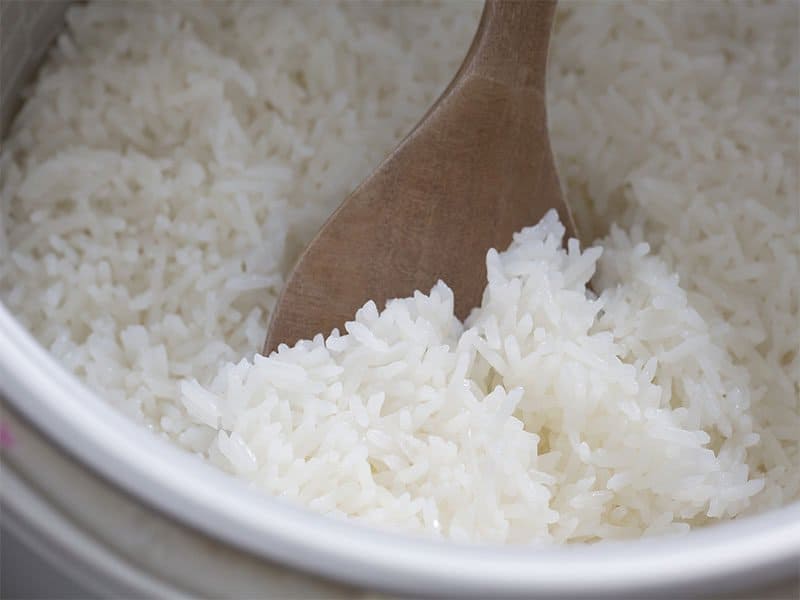
How Long Can You Keep Rice in a Rice Cooker?
In most cases, the rice cooker needs around 20 minutes to complete cooking. However, the cooking time depends on the type of rice, power mode, and the amount of rice you are cooking.
Once the device completes cooking, it will activate the keep-warm mode, until you manually shut it off.
At that point, your rice is safe to consume, even if the spores are left alive.
The more time it passes, the higher the chances are that spores will break open and spoil your rice.
On the other hand, if you take the rice away and store it at room temperature, don’t wait for more than hours to eat it. After that, you will notice the signs that your rice has gone bad, turned yellow, soft, and crumbly.
Luckily, you can keep it in the rice cooker longer than that.
To sum up, you can leave the cooked rice in for two hours without any risk. After two hours, cooked rice stored at room temperature won’t be safe for eating. Therefore, knowing the correct ways to store rice is very essential.
Storing rice in the rice cooker for several hours is completely safe, but keep it for a maximum of ten to 12 hours.
However, leaving rice for that time is safe only if the keep-warm function keeps the rice at a temperature higher than 140 degrees Fahrenheit. If your rice cooker doesn’t maintain that high temperature, you can reduce the number of hours and store it for a maximum of eight or fewer hours.
Are There Differences Between Safe Storage Options for Different Rice Types?
There are more than 400 hundreds of rice types. The shelf life of different rice types is similar when you store them uncooked. Common types such as white rice, basmati, wild rice, and jasmine rice have an indefinite life when stored uncooked either in the kitchen cabinet, refrigerator or freezer.
Brown rice, on the other hand, has a limited lifespan. It can be kept in the kitchen cabinet for a maximum of six months or one year in the fridge. If you purchase brown rice from the best brands, you might expect it to last a maximum of 18 months in the freezer.
The different rice types require different times to cook in a rice cooker, but the safe time for keeping them inside the cooker is the same. You can keep them in the rice cooker for 12 hours as long as the temperature is above 140 degrees Fahrenheit. Similarly, all types shouldn’t be stored for more than six days in the fridge and one month in the freezer, when stored cooked.
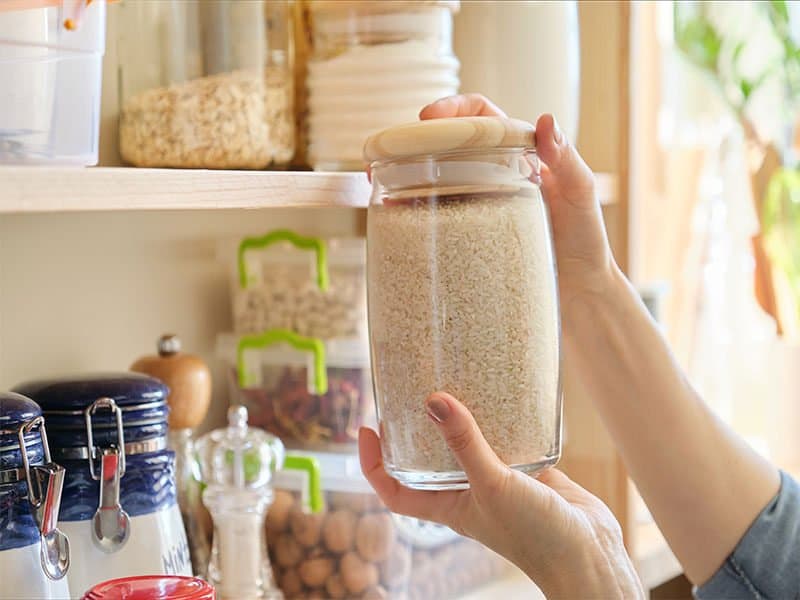
What Happens if You Keep the Rice Too Long in a Rice Cooker?
As the keep-warm function heats the bottom part of the cooking bowl, the moisture in rice grains slowly evaporates. It results in dry rice. Once the complete moisture evaporates, bacterial spores break open and start multiplying. Therefore, the rice becomes spoiled and unsafe for consumption.
Also, leaving the rice cooker on for twelve hours isn’t hazardous for the device, but the stored rice isn’t safe for eating.
Is Reheating Rice Safe?
If you stored rice at a temperature lower than 140 degrees Fahrenheit and you want to reheat it, it might not be a good idea. Rice grains might have bacteria, and reheating it won’t kill already multiplied bacteria.
In the USA, there are laws related to serving and reheating spoilage-prone food such as rice. The food needs to be cooled down and stored at proper temperatures to be safe for reheating and serving in restaurants.
You might reheat cooked rice, like fried rice, if you store it in the refrigerator, and that will make the rice safe for eating. But make sure you know the best way to reheat your fried rice before consuming it. Check for any weird signs or off smell, if there’s any, you should throw it away.
Watch this video to know more:
What is the Correct Way to Store Cooked Rice?
As I described above, you can store the cooked rice in the rice cooker for ten to twelve hours at a temperature higher than 140 degrees Fahrenheit.
The alternative is to cool down cooked rice, preferably within one hour after cooking, and store it in a refrigerator at temperatures lower than 41 degrees Fahrenheit.
The quickest way to cool down rice is to spread it over a baking sheet and leave it for ten to 15 minutes. Then use a zip-lock bag to store it or any container for food storing with a lid.
Watch this video to know more:
How Long Can You Keep Cooked Rice in the Refrigerator?
If you stored the rice in the refrigerator within one hour after cooking, it is safe to keep it in the refrigerator for four to six days. If the rice chained its texture, color and smell, toss it away.
As long as texture, smell, color, and taste are good, you can reheat it and consume it.
However, only reheat once and don’t put the reheated rice leftovers in the fridge or rice cooker for storing. Some people also wonder if eating cold rice is safe. The short answer is, yes, you can eat cold rice, but the taste may not be to your liking.
Watch this video to know more:
Can you Freeze Cooked Rice?
Freezing is another safe method to store cooked rice. Still, you have to follow the above-described procedure for cooling the cooked rice and freezing it.
If you freeze already spoiled rice, you freeze the bacteria, too. It will remain dormant until you defrost rice and become multiplying when the defrosting process is over.
That way, you risk food poisoning.
Once you complete cooking rice, cool it down and freeze. Choose handy and superb freezer containers for retaining freshness and flavors, but make sure to put the containers in the freezer within one hour after cooking.
Freeze rice is good in the refrigerator for consumption within one to three months.
What Happens if You Eat Spoiled Rice?
Spoiled rice contains standard food poisoning symptoms, including vomiting, diarrhea, and stomach ache. In most cases, the symptoms appear 30 minutes to six hours after you ate bad rice.
However, if you consume Bacillus cereus spores, they can germinate in your stomach and cause diarrhea 16 hours after you have eaten spoiled rice.
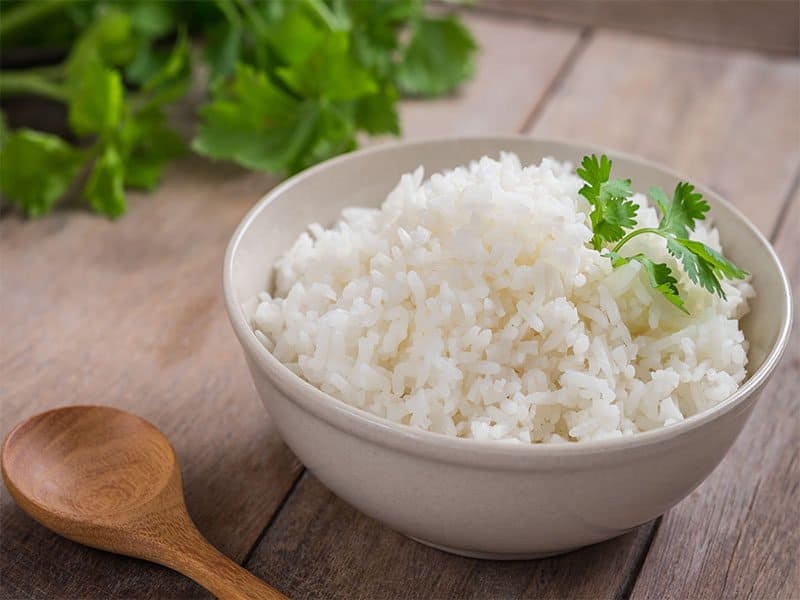
Mild symptoms of food poisoning disappear approximately after several hours after they appear. If you have eaten a larger amount of bad rice, you might need a day to fully recover, but it won’t leave severe consequences.
You should rest and rehydrate to recover. If you aren’t feeling better after 24 hours or the symptoms worsen, you should seek medical care.
What to Do with Leftover Rice?
If you have rice leftovers, there are some creative recipes you use the leftovers for. Don’t toss the leftovers; use them for shacks or other rice meals.
However, use the rice leftovers that you stored in the refrigerator or freezer properly. A great defrosting tray will help you defrost frozen rice and use it for some of the following recipes.
Let’s see some quick and easy rice leftover recipes.
Rice Pudding
Who doesn’t love creamy rice pudding? All you need is leftover rice, milk and sugar, and the spice you prefer. You can use cinnamon and cardamom, and make the traditional kheer rice pudding.
Rice Cutlets
Cutlets are easy to make and delicious meals for all generations. You can easily prepare them with boiled potatoes.
Mix boiled potatoes and cooked rice in a large bowl, and add salt, pepper, garlic powder, and any other spice you like. Form small cutlets and fry them in a pan.
You can serve them as a side dish, but I like them with coriander chutney.
Carrot Rice
Carrot rice is one of my favorite fulfilling meals. It is a well-rounded meal and can be a perfect snack. Sauté grated carrots and onions in one pan, and add rice leftovers, fresh herbs, and spices. Pour a generous amount of olive oil to boost the flavors and lemon juice on top of it. You can use fresh basil for a perfect combination.
Adding almonds will make it perfect!
Watch this video to know more:
Health First
When cooking rice, it is best to assume the amount of rice for each person, cook it and eat it immediately. Rice is spoilage-prone food that can cause food poisoning if kept too long at room temperature.
A rule of thumb to follow is 1/3 of a cup, which is approximately 60 grams is enough for one person.
If you cooked more rice than you need, make sure that a keep-warm function on your rice cooker maintains room temperature higher than 140 degrees Fahrenheit.
Don’t eat rice with changed texture, color, or smell even if you follow the above-described instructions for keeping the rice in a rice cooker, freezer, and fridge!
Share the article with your friends and family to prevent them from food poisoning caused by spoiled rice. Also, like the article, if you find my information useful!
Have you ever suffered from rice food poisoning? How bad was it?
